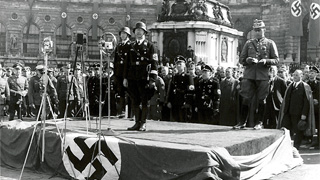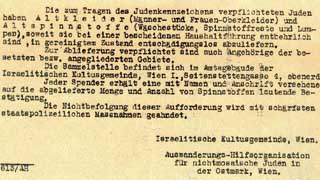Vienna under the Nazi-Regime (1938 to 1945) - History of Vienna
At the time Austria was practically surrounded by fascist countries in the shape of Germany and Italy. Austria found it increasingly difficult to withstand both the political and the economic pressure. In March 1938, the "Anschluß" was effected and Austria became part of Hitler Germany. During his first visit to the Vienna Town Hall, Adolf Hitler commented that it was imperative to provide the right setting to this "jewel in the crown". However, his policies proved devastating not only for Europe and the world at large, but also for Austria and Vienna. Anti-Semitism, which had been widespread in Vienna for many centuries and had become more prevalent since the turn of the century, eventually combined with the Nazi policy of what ultimately proved to be Jewish extermination. In November 1938 the city's synagogues, the very points of crystallisation of the religious and social life of Vienna's Jewry, fell prey to the destructive fury of a single night's rampaging, in the "pogroms of November" (Reichskristallnacht).
City expansion
As early as October 1938 the city had seen a tremendous extension of its territory, following the example of Greater Hamburg. 97 Lower Austrian communities were incorporated into Vienna. The number of urban districts increased from 21 to 26. The extension cut deep into the Lower Austrian territory, in all directions, and, at the end of the day, the urban area had tripled. This was the kind of city that experienced the Second World War, which, unlike the earlier war of 1914 to 1918, directly and brutally affected the city and its residents. From 1943 the city suffered repeated Allied bombing. When the war was brought to an end in April 1945 fighting was going on in the very heart of the city.
City of Vienna | Municipal and provincial archives of Vienna
Contact form


